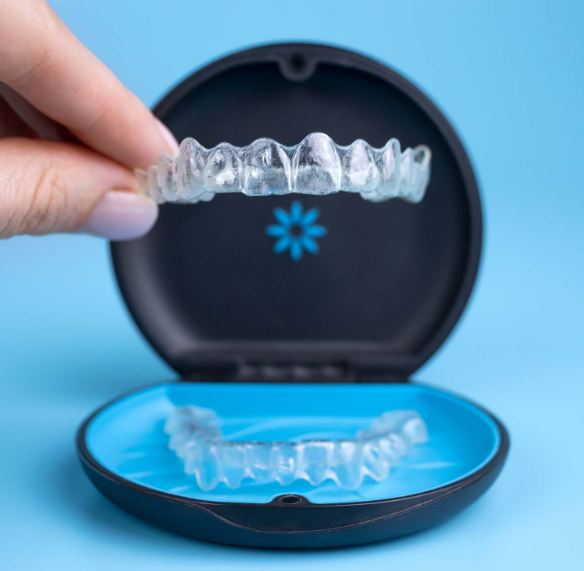If you're an adult considering straightening your teeth, you're not alone, and you're not limited to metal braces. Clear options like Invisalign have changed how adults approach orthodontic treatment. But is Invisalign better than traditional braces? The answer depends on your lifestyle, your goals, and how much you're willing to commit.
We’ll break down what working adults and professionals should know about both options, so you can make the best decision for your smile.
What Is Invisalign, and How Does It Work?
Invisalign uses a sequence of clear, removable aligners to gradually move your teeth into proper alignment. Each set is custom-made and worn for about two weeks before moving to the next one. Most adults wear Invisalign aligners for 20–22 hours a day and finish treatment in about 12 to 18 months.
Because the aligners are nearly invisible and can be taken out to eat or brush, Invisalign appeals to many adults who want a low-key option.
Traditional Braces: Tried, True, and Still Effective
Traditional braces use metal or ceramic brackets glued to your teeth and connected by wires.
While they’re more noticeable, braces are highly effective for complex dental issues, such as major crowding, gaps, or bite correction. Treatment usually takes 18 to 24 months for adults, depending on the case.
Braces may not be as discreet as Invisalign, but they’ve been refined over the years. Modern brackets are now smaller and may even be tooth-colored.
Invisalign vs. Braces: How They Compare for Adults
Here’s what to keep in mind when comparing Invisalign and braces:
1. Appearance:
If you work in client-facing roles or just want to feel more confident day-to-day, Invisalign wins on appearance. The clear trays are hard to notice, even in meetings or photos. Braces, especially metal ones, are more visible.
2. Comfort:
Many adults find Invisalign to be more comfortable since it does not involve wires or sharp brackets. However, switching to a new set of trays every few weeks still comes with some soreness.
3. Maintenance:
With Invisalign, you must remove your aligners before eating or drinking (except for water) and brush your teeth after every meal before putting them back in. Braces require more careful brushing and flossing around brackets, but they stay in place 24/7.
4. Discipline:
Invisalign gives you flexibility, but only if you're disciplined. If you don’t wear them as directed, they won’t work. Braces stay on, so there’s no risk of forgetting.
5. Treatment Range:
Braces can treat almost any orthodontic issue. Invisalign is suitable for addressing mild to moderate issues, such as crooked front teeth or small gaps. More complex bite problems may still need braces or a combination approach.
6. Appointments:
With Invisalign, visits are shorter and less frequent, often every 6–8 weeks. That’s a bonus for busy adults who want fewer interruptions to their routine.
Which Option Is Better for Your Lifestyle?
If your workday includes presentations, client meetings, or frequent travel, Invisalign is probably the better fit. You’ll feel more comfortable speaking, smiling, and eating without the distraction of brackets or wires.
However, if you’re the type who forgets things easily or just wants a no-fuss solution, braces might be a better long-term choice. You won’t have to keep track of trays or worry about losing them.
Adults who are serious about results and ready to commit to the routine of Invisalign often say it was the best decision they made for their smile.
Final Thoughts: Invisalign Offers Discreet Power, Braces Offer Reliable Results
Both Invisalign and traditional braces can provide you with a straighter and healthier smile. The best choice depends on your goals, lifestyle, and how much responsibility you're ready to take on.
Invisalign offers clear advantages in appearance and flexibility, especially for busy professionals. Braces, on the other hand, are powerful and consistent, ideal for more complicated dental cases.
Regardless of your choice, the most crucial step is scheduling a consultation with a reliable orthodontist. They’ll help you weigh your options and create a treatment plan that works for your life, not just your teeth.
Ready to explore your options? Talk to an orthodontist experienced in Invisalign and adult care. A confident smile could be closer than you think.





Comments